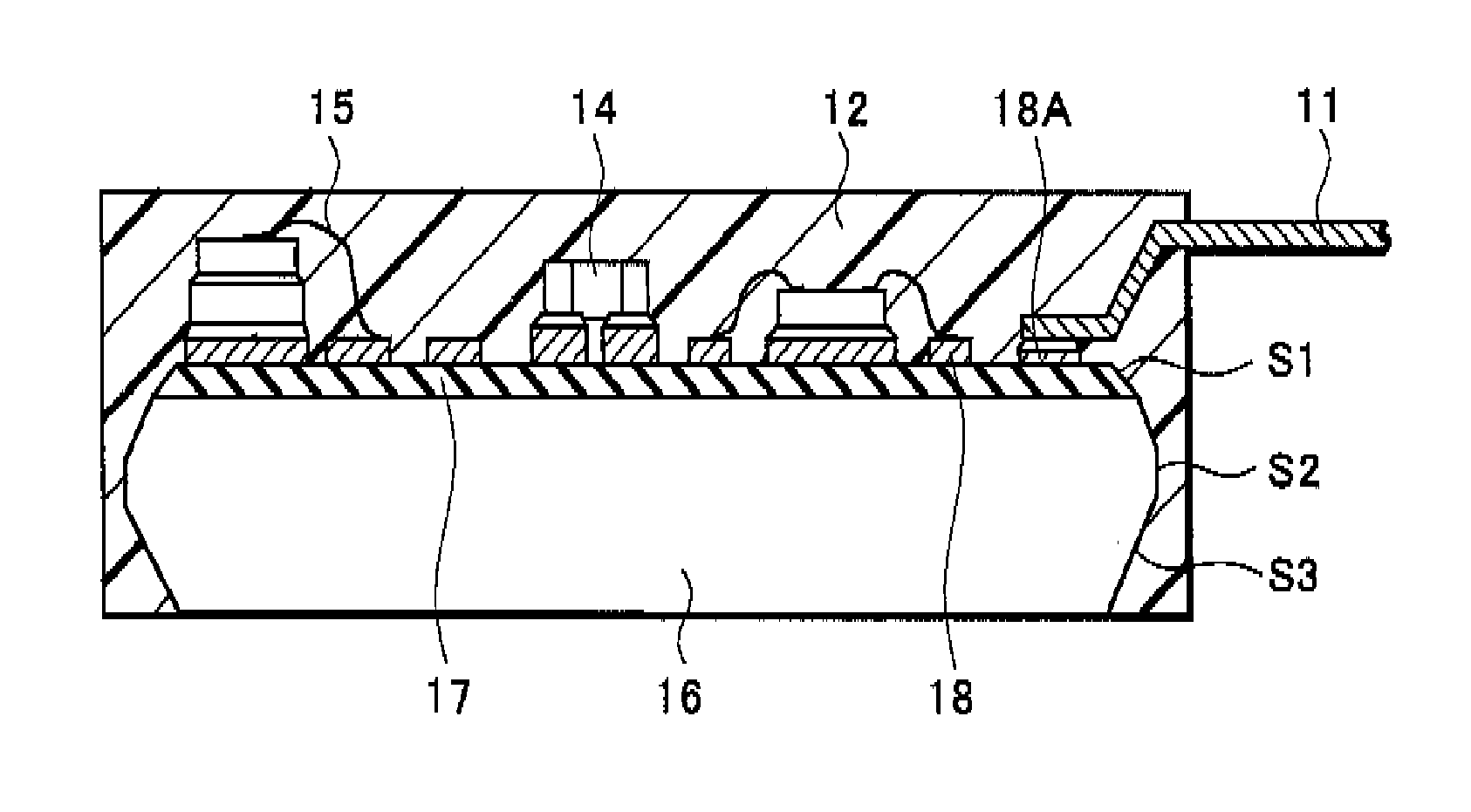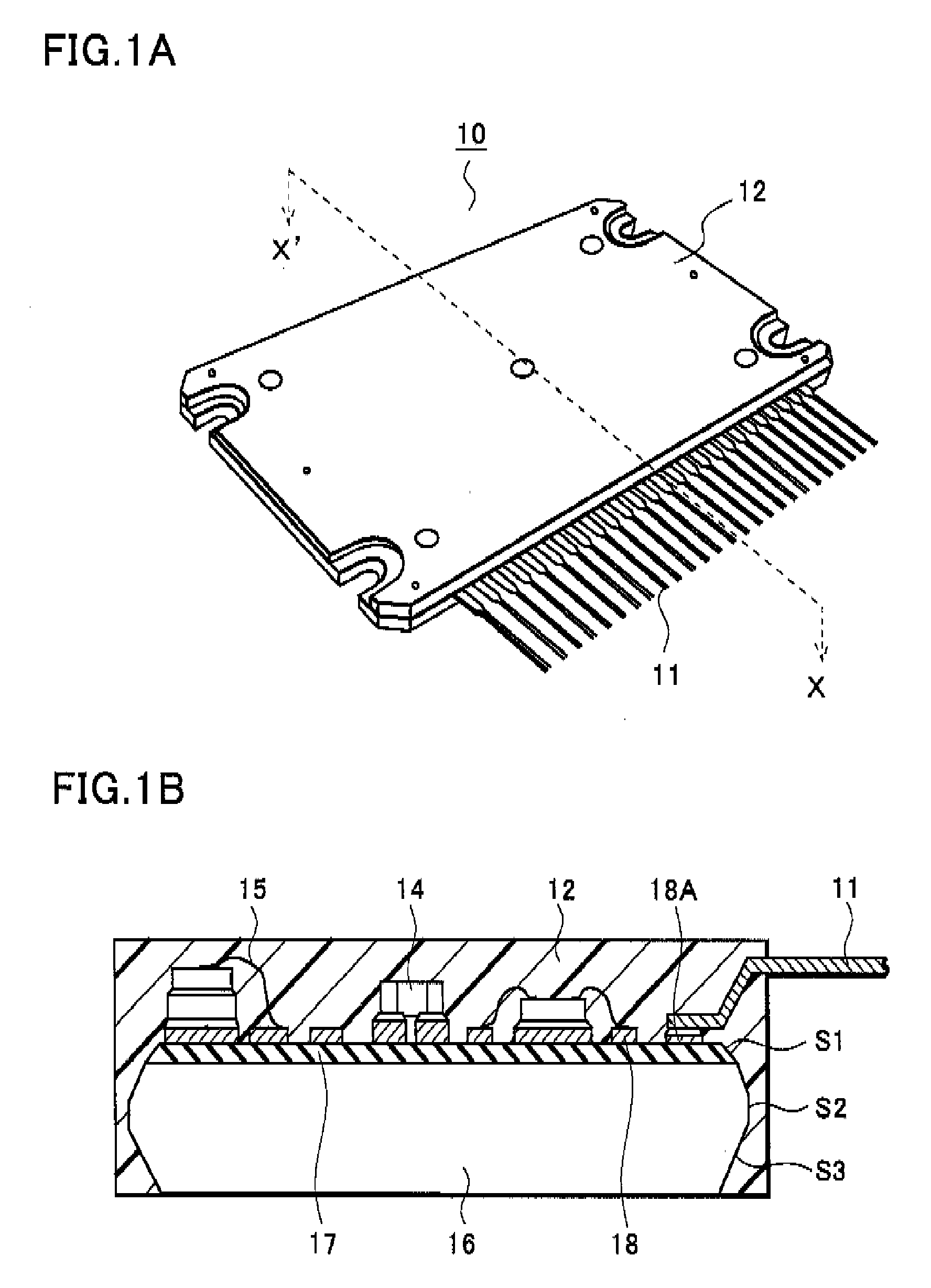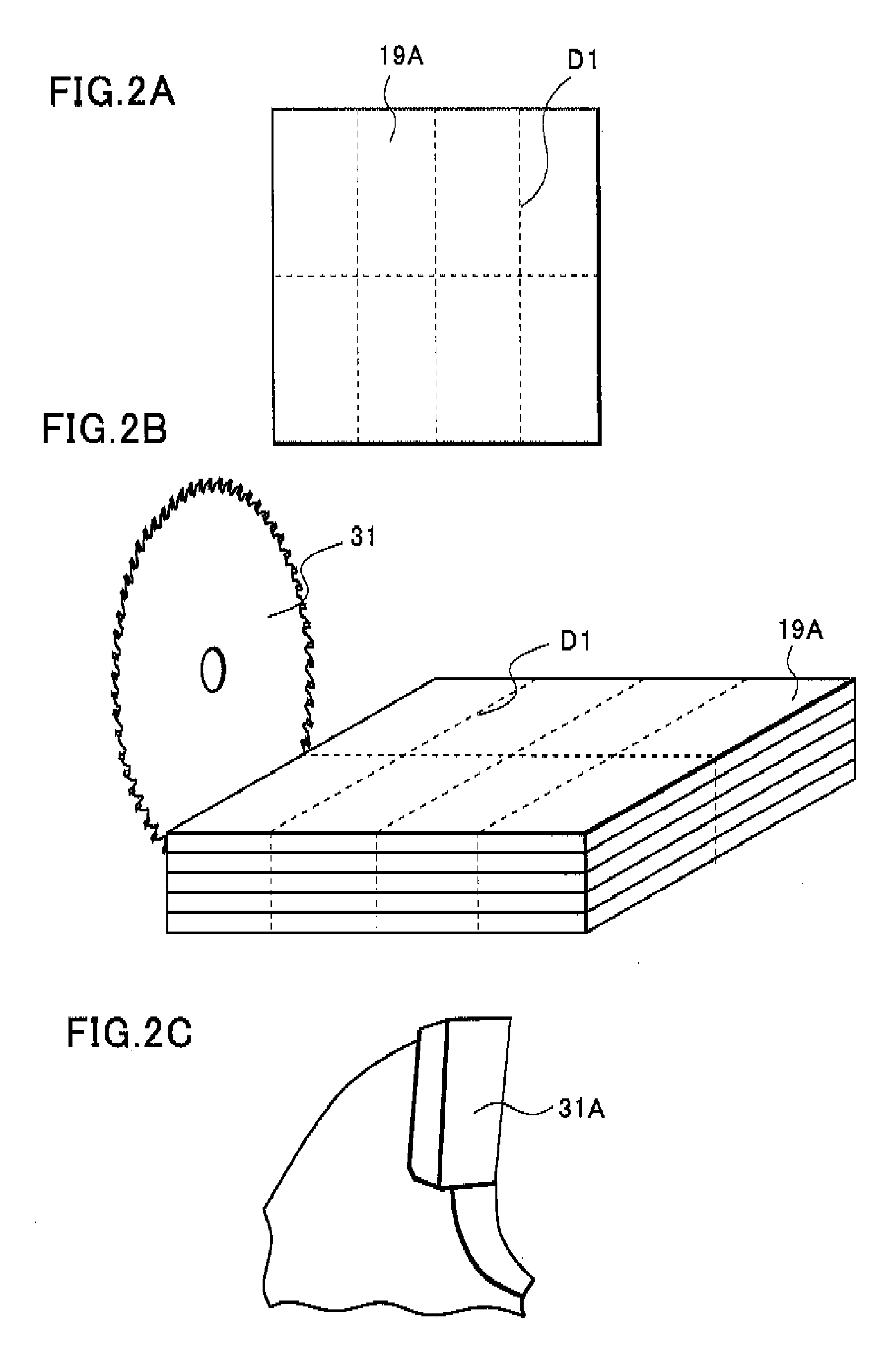Method of manufacturing hybrid integrated circuit device
- Summary
- Abstract
- Description
- Claims
- Application Information
AI Technical Summary
Benefits of technology
Problems solved by technology
Method used
Image
Examples
Embodiment Construction
[0038] A configuration of a hybrid integrated circuit device 10 according to a preferred embodiment of the present invention will be described with reference to FIGS. 1A and 1B. FIG. 1A is a perspective view of the hybrid integrated circuit device 10, and FIG. 1B is a cross-sectional view taken along the X-X′ line in FIG. 1A.
[0039] The hybrid integrated circuit device 10 of the preferred embodiment includes a circuit board 16 having an electric circuit composed of a conductive pattern 18 and circuit elements 14 formed on a surface thereof, and sealing resin 12 for sealing the electric circuit and covering at least the surface of the circuit board 16. The respective constituents will now be described below.
[0040] The circuit board 16 is a board made of metal such as aluminum or copper. For example, when a board made of aluminum is adopted as the circuit board 16, there are two methods of insulating the circuit board 16 from the conductive pattern 18 formed on the surface thereof. T...
PUM
 Login to View More
Login to View More Abstract
Description
Claims
Application Information
 Login to View More
Login to View More - R&D
- Intellectual Property
- Life Sciences
- Materials
- Tech Scout
- Unparalleled Data Quality
- Higher Quality Content
- 60% Fewer Hallucinations
Browse by: Latest US Patents, China's latest patents, Technical Efficacy Thesaurus, Application Domain, Technology Topic, Popular Technical Reports.
© 2025 PatSnap. All rights reserved.Legal|Privacy policy|Modern Slavery Act Transparency Statement|Sitemap|About US| Contact US: help@patsnap.com



